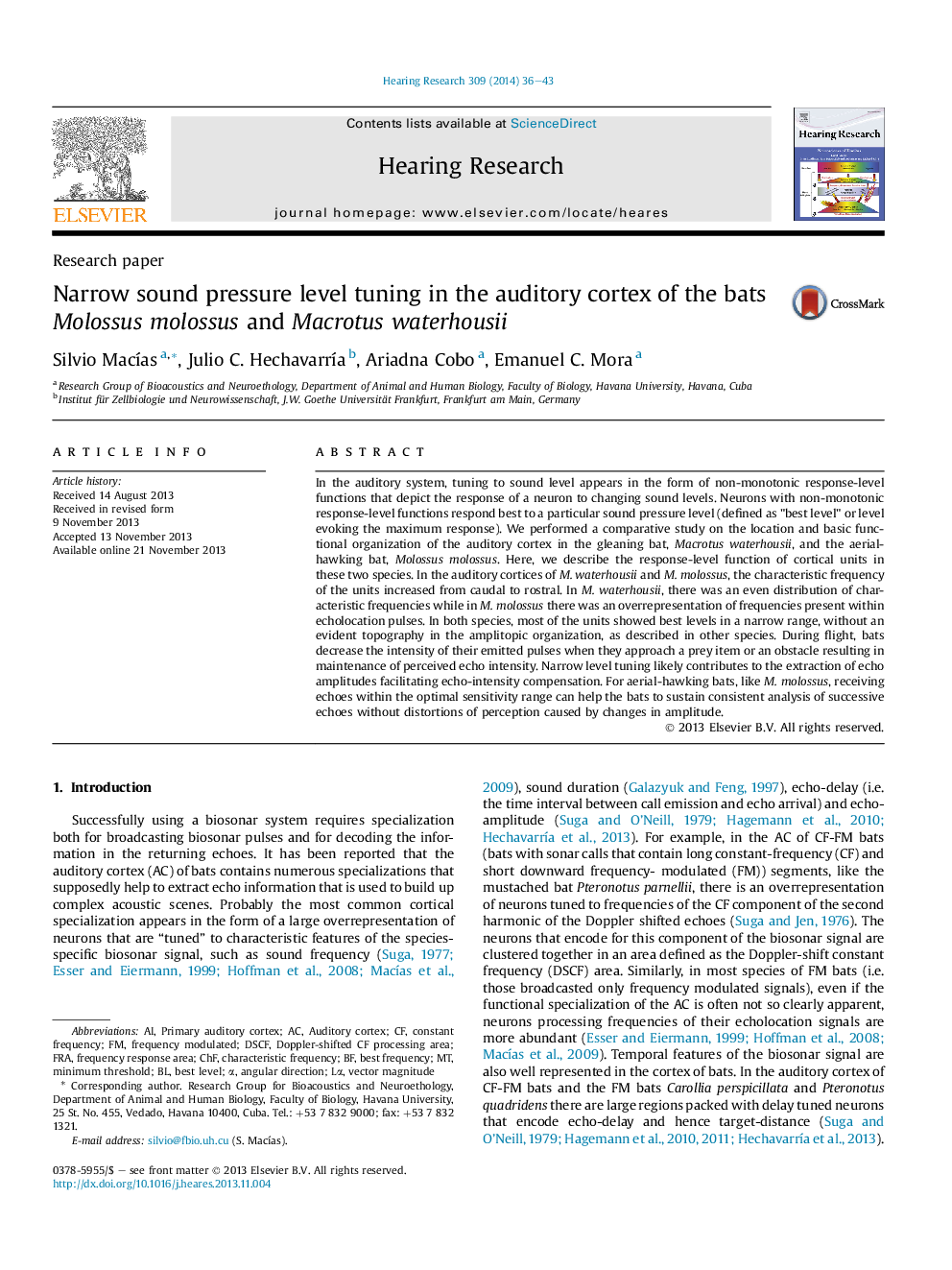| کد مقاله | کد نشریه | سال انتشار | مقاله انگلیسی | نسخه تمام متن |
|---|---|---|---|---|
| 6287432 | 1615591 | 2014 | 8 صفحه PDF | دانلود رایگان |

- Neurons in the auditory cortex if two bats species are tuned to sound level pressure.
- A particular level range is overrepresented in the auditory cortex of two bats species.
- There is not an evident topographical representation of level in the auditory cortex.
In the auditory system, tuning to sound level appears in the form of non-monotonic response-level functions that depict the response of a neuron to changing sound levels. Neurons with non-monotonic response-level functions respond best to a particular sound pressure level (defined as "best level" or level evoking the maximum response). We performed a comparative study on the location and basic functional organization of the auditory cortex in the gleaning bat, Macrotus waterhousii, and the aerial-hawking bat, Molossus molossus. Here, we describe the response-level function of cortical units in these two species. In the auditory cortices of M. waterhousii and M. molossus, the characteristic frequency of the units increased from caudal to rostral. In M. waterhousii, there was an even distribution of characteristic frequencies while in M. molossus there was an overrepresentation of frequencies present within echolocation pulses. In both species, most of the units showed best levels in a narrow range, without an evident topography in the amplitopic organization, as described in other species. During flight, bats decrease the intensity of their emitted pulses when they approach a prey item or an obstacle resulting in maintenance of perceived echo intensity. Narrow level tuning likely contributes to the extraction of echo amplitudes facilitating echo-intensity compensation. For aerial-hawking bats, like M. molossus, receiving echoes within the optimal sensitivity range can help the bats to sustain consistent analysis of successive echoes without distortions of perception caused by changes in amplitude.
Journal: Hearing Research - Volume 309, March 2014, Pages 36-43